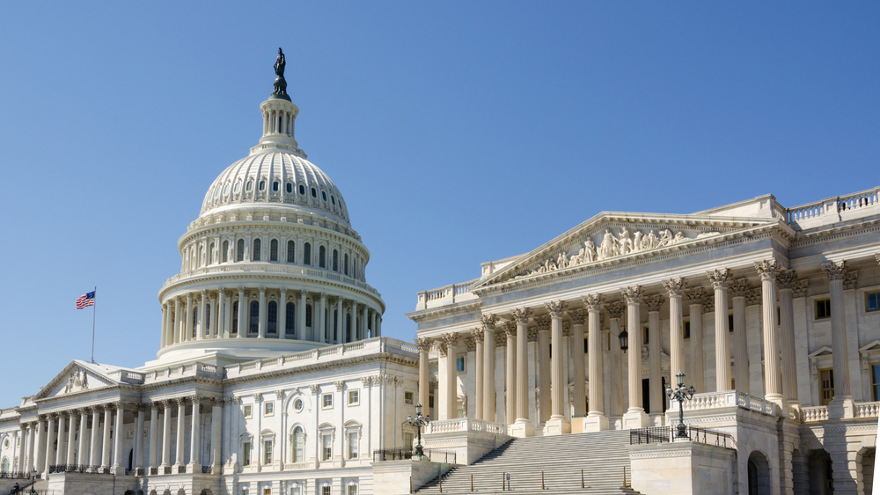CFPB update: Auto finance bulletin now subject to Congressional review

By subscribing, you agree to receive communications from Auto Remarketing and our partners in accordance with our Privacy Policy. We may share your information with select partners and sponsors who may contact you about their products and services. You may unsubscribe at any time.
WASHINGTON, D.C. –
The flurry of activity associated with the Consumer Financial Protection Bureau, its leadership and the regulation of auto financing intensified again this week.
On Tuesday, Washington D.C. District Court Judge Timothy Kelly scheduled preliminary injunction hearing for Dec. 22 as the court clash continues between Mick Mulvaney, who President Trump installed as the temporary CFPB director; and Leandra English, who was selected the bureau’s deputy director just before Richard Cordray departed on his way toward running for governor in Ohio.
Then, Thomas Armstrong, general counsel for the Government Accountability Office (GAO), delivered a letter to Sen. Patrick Toomey indicating that the bulletin the CFPB issued back in 2013 involving indirect auto financing and compliance with the Equal Credit Opportunity Act (ECOA) actually is a “rule” for purposes of the Congressional Review Act (CRA). This ultimately means that it must be submitted to Congress for review.
“GAO’s decision makes clear that the CFPB’s back-door effort to regulate auto loans, which was based on a dubious legal justification, did not comply with the Congressional Review Act,” said Toomey, a Pennsylvania Republican.
“GAO’s decision is an important reminder that agencies have a responsibility to live up to their obligations under the law,” he continued. “When they don't, Congress should hold them accountable. I intend to do everything in my power to repeal this ill-conceived rule using the Congressional Review Act.”
Part of what triggered the bulletin issued in March 2013 was the CFPB’s contention about discriminatory issues arising in connection with dealer markup when a customer applies for financing through the dealership’s F&I office to the store’s network of finance companies.
Subscribe to Auto Remarketing to stay informed and stay ahead.
By subscribing, you agree to receive communications from Auto Remarketing and our partners in accordance with our Privacy Policy. We may share your information with select partners and sponsors who may contact you about their products and services. You may unsubscribe at any time.
Armstrong explained that the CFPB discusses the legal theories under which indirect auto finance companies that are determined to be creditors under ECOA could be held liable for pricing disparities on a prohibited basis when such disparities exist within an indirect auto lender’s portfolio.
Armstrong wrote in the letter available here that, “In its final section, the bulletin states that indirect auto lenders ‘should take steps to ensure that they are operating in compliance with the ECOA and Regulation B as applied to dealer markup and compensation policies,’ and then lists a variety of steps and tools that lenders may wish to use to address significant fair lending risks.”
Armstrong made several other points in the letter to Toomey that could interest finance companies and dealerships.
“At issue here is whether a nonbinding general statement of policy, which provides guidance on how CFPB will exercise its discretionary enforcement powers, is a rule under CRA. CFPB states, and we agree, that the Bulletin ‘is a non-binding guidance document’ that ‘identifies potential risk areas and provides general suggestions for compliance’ with ECOA and Regulation B. Moreover, the bulletin is a general statement of policy that offers clarity and guidance on the bureau’s discretionary enforcement approach,” Armstrong wrote.
Armstrong also explained that the CRA excludes three categories of rules from coverage, including:
—Rules of particular applicability
—Rules relating to agency management or personnel
—Rules of agency organization, procedure or practice that do not substantially affect the rights or obligations of non-agency parties
“CFPB did not raise any claims that the bulletin would not be a rule under CRA pursuant to any of the three exceptions, and we can readily conclude that the bulletin does not fall within any of the those exceptions. The bulletin is of general and not particular applicability, does not relate to agency management or personnel, and is not a rule of agency organization, procedure or practice,” Armstrong wrote.
“The bulletin is a general statement of policy designed to assist indirect auto lenders to ensure that they are operating in compliance with ECOA and Regulation B, as applied to dealer markup and compensation policies. As such, it is a rule subject to the requirements of CRA,” he went on to state.
Depending on how lawmakers assess the bulletin, plenty of action could involve the CFPB director; a position that has been in flux since Cordray said he would be departing the bureau.
Kelly’s decision is continuing the matter that initially triggered a ruling on Nov. 28 against English in her motion for a temporary restraining order against Mulvaney as acting director of the CFPB.
No matter what happens in court, Consumer Bankers Association president and chief executive officer Richard Hunt continues to maintain how the bureau should be led by more than just a single person.
“We look forward to working with acting CFPB director Mick Mulvaney to bring transparent and balanced consumer protections to all customers and small businesses. Many actions conducted previously by the CFPB as well as those that are pending warrant a thorough review and we support Mr. Mulvaney’s previous comments concerning a five-person bipartisan commission,” Hunt said.
“If the CFPB were structured as a bipartisan commission, as originally intended, we could have avoided this circus,” Hunt continued. “A Senate-confirmed, bipartisan commission at the CFPB would ensure consumers benefit from a fair and accountable rulemaking process. Having a sole director structure, with unilateral rulemaking authority, does not provide the long-term stability and certainty consumers deserve.”


